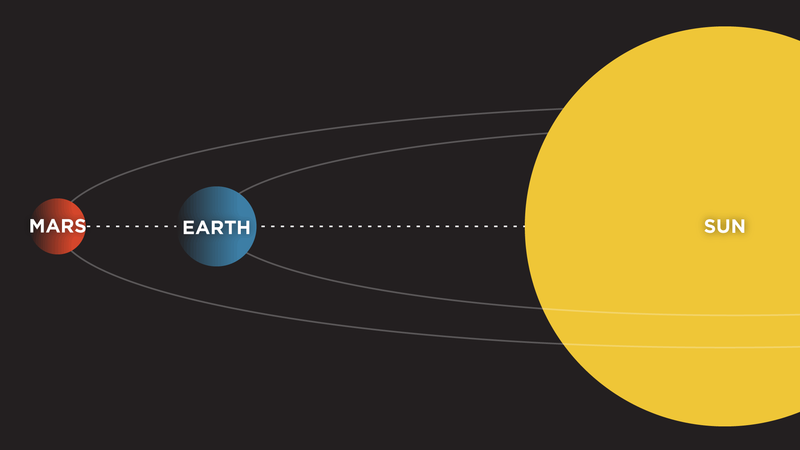
Every two years or so, the sun, Earth, and Mars line up — and that’s what is happening now. It’s a celestial orientation known as Mars opposition. Leaving aside any significance this might have for astrologers, from an astronomical point of view there’s one thing you can say for sure about this Mars opposition: Mars will be brighter in the night sky than it’s been for 15 years.
Mars is always brighter than usual during opposition. That’s because from our vantage point here on Earth, the sun is shining directly at Mars. It’s like pointing a flashlight directly at what you want to see. In this case, the sun is the flashlight.
But this opposition is special because of where Mars is in its orbit around the sun. That orbit is not a perfect circle. It’s elliptical, slightly egg-shaped. As a consequence, there’s a point in every Martian year where Mars is closest to the Earth.
This year that happens on July 31, just a few days past opposition. On that day Mars will only 35.8 million miles from Earth, and the closer an object is, the brighter it appears.
There another strange thing that happens with Mars around the time of opposition. Most of the time, if you plotted the position of Mars in the night sky, it would appear to be moving eastward on successive nights. But for a few months around the time of opposition, it appears to change direction.
This strange behavior flummoxed early astronomers who thought the planets revolved around the Earth, not the sun. But it makes sense if you realize that the sun is at the center of the solar system.

